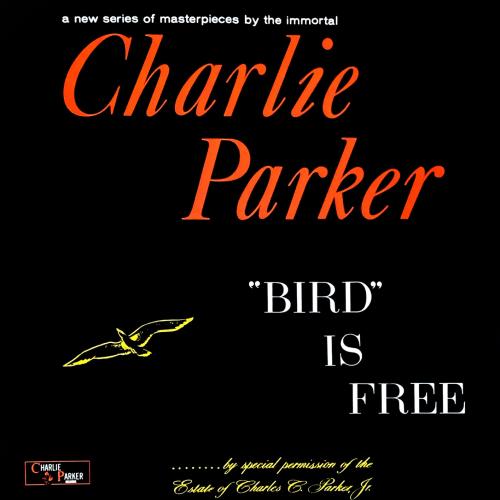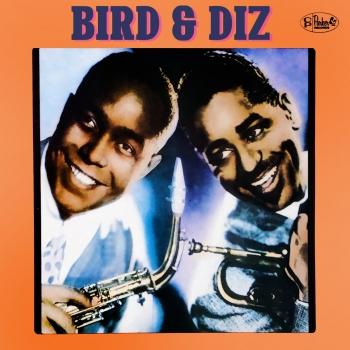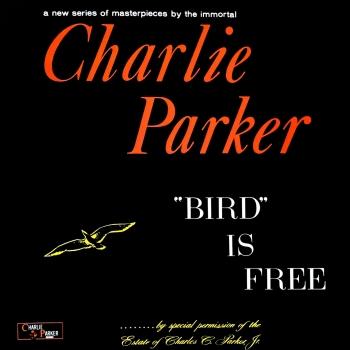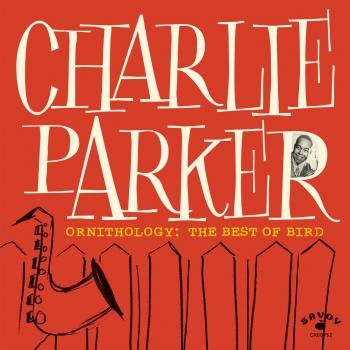
Bird is Free (Remastered) Charlie Parker
Album info
Album-Release:
1950
HRA-Release:
20.01.2023
Album including Album cover
- 1 Rocker 05:22
- 2 Sly Mongoose 03:29
- 3 Moose The Mooche 03:56
- 4 Star Eyes 02:20
- 5 This Time The Dream's On Me 06:11
- 6 Cool Blues 02:45
- 7 My Little Suede Shoes 04:15
- 8 Lester Leaps In 03:59
- 9 Laura 03:07
Info for Bird is Free (Remastered)
Charlie Parker Records presents Bird's 1950 classic "Bird" Is Free, a collection of 9 originals and standards.
"Live tapes of Charlie Parker, often of abysmal quality, seem to be an inexhaustible resource. Unearthed, remastered and released by special permission of Parker's estate, BIRD IS FREE is of notably better quality than most, though the near-total lack of liner notes is somewhat disappointing. Recorded before a vocally appreciative audience at Harlem's Rockland Palace Dance Hall on September 26, 1952, this dance set finds the great alto player swinging with ease through a fairly brief set composed mostly of standards such as Gerry Mulligan's "Rocker," Johnny Mercer's "Laura" and "This Time The Dreams Are On Me" and Lester Young's "Lester Leaps In." Only a third of the nine tracks are Parker originals, relaxed renditions of his classic "Cool Blues," "Moose the Mooche" and "My Little Suede Shoes." Throughout, Parker plays with inimitable style and good humor and his quartet, featuring the great drummer Max Roach, swings effortlessly." (AMG)
Charlie Parker, alto saxophone
Mundell Lowe, guitar
Walter Bishop, Jr., piano
Teddy Kotick, bass
Max Roach, drums
Recorded 26 September 1952 at Rockland Palace, New York City
Digitally remastered
Charlie Parker
The only child of Charles and Addie Parker, Charlie Parker was one of the most important and influential saxophonists and jazz players of the 1940’s.
When Parker was still a child, his family moved to Kansas City, Missouri, where jazz, blues and gospel music were flourishing. His first contact with music came from school, where he played baritone horn with the school’s band. When he was 15, he showed a great interest in music and a love for the alto saxophone. Soon, Parker was playing with local bands until 1935, when he left school to pursue a music career.
From 1935 to 1939, Parker worked in Kansas City with several local jazz and blues bands from which he developed his art. In 1939, Parker visited New York for the first time, and he stayed for nearly a year working as a professional musician and often participating in jam sessions. The New York atmosphere greatly influenced Parker's musical style.
In 1938, Parker joined the band of pianist Jay McShann, with whom he toured around Southwest Chicago and New York. A year later, Parker traveled to Chicago and was a regular performer at a club on 55th street. Parker soon moved to New York. He washed dishes at a local food place where he met guitarist Biddy Fleet, the man who taught him about instrumental harmony. Shortly afterwards, Parker returned to Kansas City to attend his father’s funeral. Once there, he joined Harlan Leonard’s Rockets and stayed for five months. In 1939, Yardbird rejoined McShann and was placed in charge of the reed section. Then, in 1940, Parker made his first recording with the McShann orchestra.
During the four years that Parker stayed with McShann's band, he got the opportunity to perform solo in several of their recordings, such as Hootie Blues, Sepian Bounce, and the 1941 hit Confessing the Blues. In 1942, while on tour with McShann, Parker performed in jam sessions at Monroe’s and Minton’s Playhouse in Harlem. There he caught the attention of up-and-coming jazz artists like Dizzy Gillespie and Thelonious Monk. Later that year, Parker broke with McShann and joined Earl Hines for eight months.
The year 1945 was extremely important for Parker. During that time he led his own group in New York and also worked with Gillespie in several ensembles. In December, Parker and Gillespie took their music to Hollywood on a six-week nightclub tour. Parker continued to perform in Los Angeles until June 1946, when he suffered a nervous breakdown and was confined at a state hospital. After his release in January 1947, Parker returned to New York and formed a quintet that performed some of his most famous tunes.
From 1947 to 1951, Parker worked in a number of nightclubs, radio studios, and other venues performing solo or with the accompaniment of other musicians. During this time, he visited Europe where he was cheered by devoted fans and did numerous recordings. March 5, 1955, was Parker’s last public engagement at Birdland, a nightclub in New York that was named in his honor. He died a week later in a friend’s apartment.
Charles 'Yardbird' Parker was an amazing saxophonist who gained wide recognition for his brilliant solos and innovative improvisations. He was, without a doubt, one of the most influential and talented musicians in jazz history.
This album contains no booklet.











